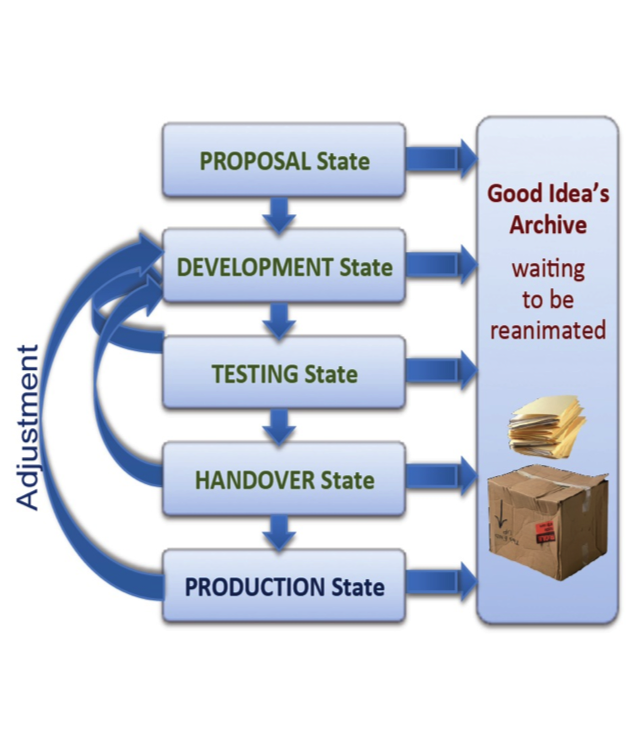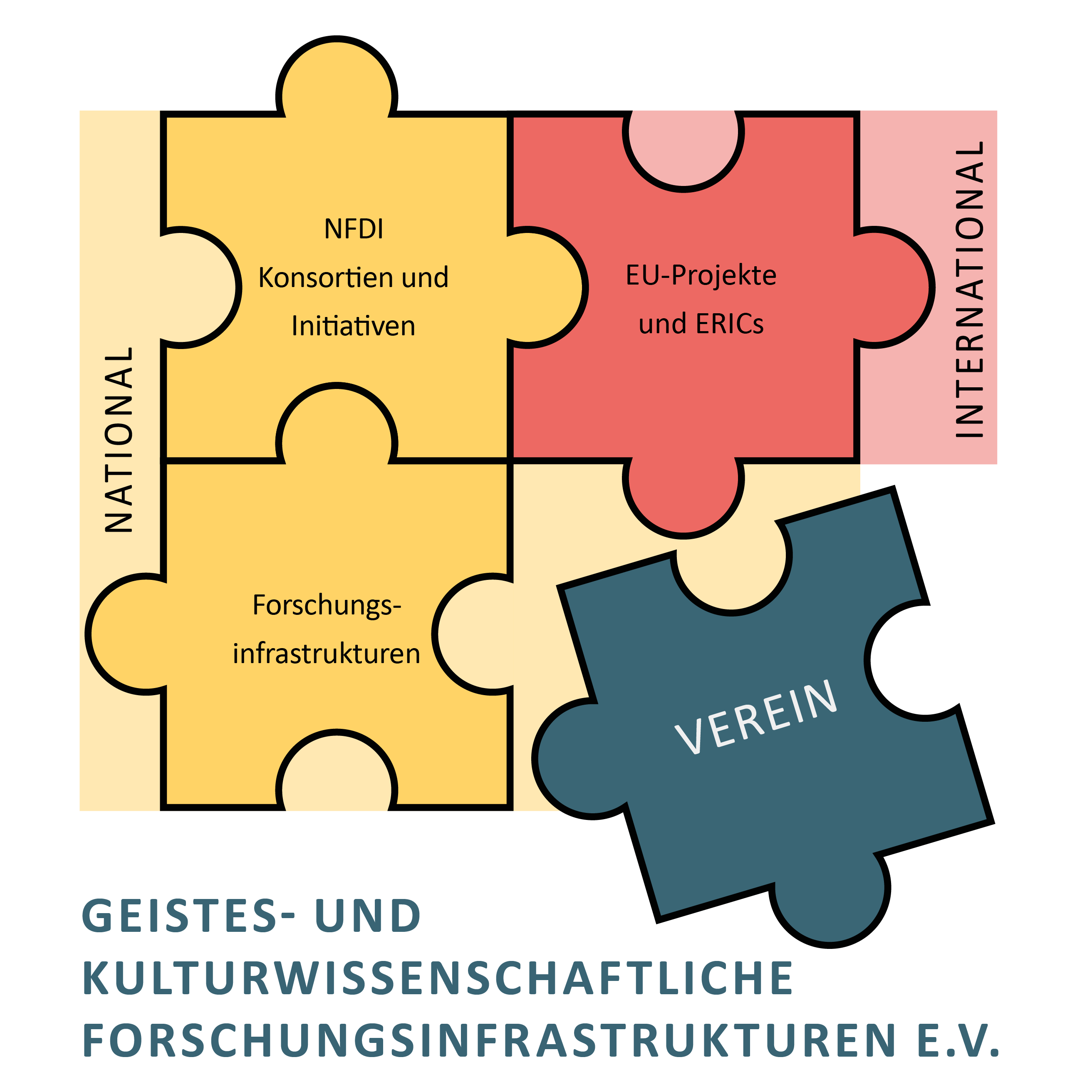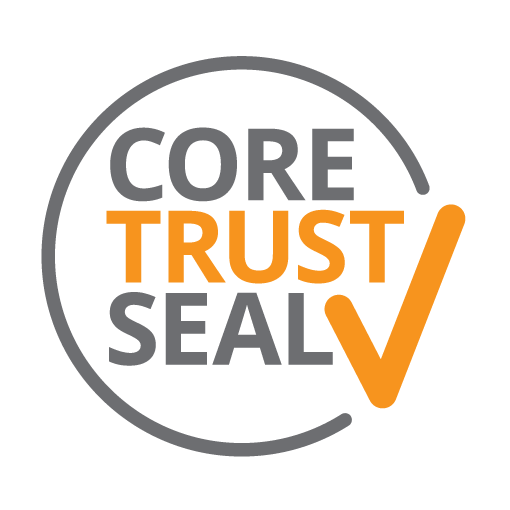DARIAH-DE Service Life Cycle
This page highlights the integration of new or existing services (softwares) into the DARIAH-DE research infrastructure. The DARIAH-DE Service Life Cycle has set up the steps in the integration process, which a new or existing service needs to follow to integrate it in the DARIAH-DE research infrastructure.
You might also want to check out DARIAH-DE's Working Papers Nr. 11 on Discussion and Definition of a Research Data LifeCycle (only available for DARIAH-DE and written in German) or Report 3.2.7, which is the basis of this page and it also contains a detailed description of the criteria of the states.
States in the Development of a New Service
During the development, a service will pass through a chain of stages determining the service life cycle, see Figure 1: DARIAH-DE Service Life Cycle States. A (formal) decision is required to transfer a service from one state to another. These states are:
- PROPOSAL State
- DEVELOPMENT State
- TESTING State
- HANDOVER State
- PRODUCTION State
- GOOD IDEA'S ARCHIVE

Figure 1: DARIAH-DE Service Life Cycle States
PROPOSAL State
The Service is described and proposed in the PROPOSAL State. The proposal will contain the following information:
- Proposal including affiliation and contact information (mandatory)
- Title, partner, coordinator, DARIAH-DE contact person (mandatory)
- Information about the project, if available (nice if available)
- Relation to DARIAH (mandatory)
- DARIAH-DE is not an exclusive resources provider and cooperates with external research projects.
- Cooperation and collaboration is the focal point and the objective is, that the results, research data, tools or services obtained from the research projects can be used sustainably and be used by the professional communities for a long period of time.
- At least one of the criteria should be met: Teaching, research, research data, technical infrastructure (mandatory)
- The proposal is to be located in the arts and humanities (mandatory)
- Fill in the templates with: disciplines, objectives, state of research, methods (mandatory)
- Description of the proposed service (mandatory)
- Scientific disciplinal description of the proposed service (mandatory)
- Is there a description of the function for the service, e.g. user manual? (nice if available)
- Target audience and expected size of the target audience (mandatory)
- Is technical information of the service, such as operating
system, programming language and used libraries, already known?
- If yes: detailed technical description (nice if available)
- Estimation of efforts and costs for development and operation (mandatory)
- Does external funding for development, integration, and operation exist? (nice if available)
- Which DARIAH resources will be required including estimation of efforts/costs for development, integration and operation? (nice if available)
- Fill in the templates with: resources (provided by local data/compute center), select an offer from the selection (menu card), reusability (mandatory)
- Dependencies on other services (nice if available)
Two DARIAH-DE Mentors will be assigned by the AG SLC to prepare the decision, if the service may be integrated into the DARIAH-DE infrastructure. The Mentors will escort the service during its life cycle until it reaches either the PRODUCTION State or is being terminated, i.e. moved to the “Good Idea’s Archive” State.
A decision by the Executive Board is required, whether the service is worth being developed with support of the DARIAH infrastructure (→ DEVEPLOMENT) or not (→ “Good Idea’s Archive”). AG SLC will prepare the recommendation.
DEVELOPMENT State
In the DEVELOPMENT State the service is iteratively being developed, deployed locally in the development environment and tested. The Mentors support the development process and are responsible for using and integration of existing DARIAH-DE services.
Required documentation:
- Manual
- Fact Sheet
- User Guide
- Checklist for decommissioning the operation of the service containing
- Criteria for decommissioning, e.g. low usage
- Dependencies and other information which needs to be considered
After meeting all requirements, the mentors decide the transfer to the next state: TESTING State.
TESTING State
During the TESTING State the service has to be deployed on the DARIAH-DE Platform and the service is beta-tested by DARIAH communities, scholars and researchers. After successful tests the Mentors may decide the transfer to the HANDOVER State or, in case of required revisions, back to the DEVELOPMENT State.
HANDOVER State
In the HANDOVER State a quality assurance including the information/requirements of the “hosting factsheet” is performed. The service, the software and its documentation is reviewed by the "DARIAH-DE Service Hosting Team", e.g. DeISU. If OK the service will be recommended as a DARIAH-DE hosted software service to be deployed on the Software Hosting Services.
The Executive Board will decide if the service will go into the PRODUCTION State if recommended by the AG SLC. Otherwise the service will go back into the DEVEPLOMENT State or further into the “Good Idea’s Archive” State.
End of a Service
Hand over following check list during the HANDOVER state
- When the service is not longer needed? (e.g. too little users)
- Which dependencies exist?
- At what expense, including cost estimation in cooperation with DelSU, can the service be archived and what is the process?
PRODUCTION State
In the PRODUCTION State the service is deployed and hosted in the Software Hosting Services and maintained by DARIAH, the "DARIAH Service Hosting Team", e.g. DeISU. DARIAH is responsible for the service and its marketing. Users use the service according to the DARIAH "Terms of Use".
During maintenance the service may be further developed and transferred back to the DEVELOPMENT State. The development team may be inside the DARIAH consortium or the original developer team, if available.
“GOOD IDEA'S Archive”
“Good Idea’s Archive” is a reformulation of the former state. Some of the service ideas proposed might be used in further proposals.
Sustainability aspects
- Archiving by the way of bit preservation, possible fail-safe data storage and distributed backups
- Archiving of data and data-ecosystem
Notes
Decision Bodies
To transfer a service from one state to another a (formal) decision is required.
The Mentors
DARIAH Mentors will be selected and assigned by the AG SLC to prepare the decision, if the service may be integrated into the DARIAH infrastructure. They will guide the service during its life cycle until it reaches either the PRODUCTION State or is being terminated, i.e. moved to the “Good Idea’s Archive State.
The mentor's job will be:
- Proposal State: technical mentor checks feasibility, A+H mentor surveys usefulness for the humanities community
- Development State: technical mentoring
- Testing State: A+H mentor connects A+H experts to test the service
- Handover State: technical mentoring
- Production State: technical mentoring
For each new service the following conditions should be met:
- at least one infrastructure expert
- at least one A+H expert
Criteria of Service Life Cycle States
Criteria for each state of a new or existing service life cycle (status of the Report 3.2.7) are listed as follows. A reference to recent developments on this toic can be found in the last chapter.
SLC: PROPOSAL
Contact Information
- Proposal including affiliation and contact information
- Have the responsibilities and contact persons been named?
- Fill in the templates with: title, partners, coordinator, DARIAH contact person,project initiators, duration, website
Correlation with DARIAH
- DARIAH-DE is not an exclusive resources provider and cooperates with external research projects.
- Cooperation and collaboration is the focal point and the objective is, that theresults, research data, tools or services obtained from the research projectscan be used sustainably and be used by the professional communities for along period of time.
- At least one of the criteria should be met: Teaching, research, research data,technical infrastructure (mandatory)
- The proposal is to be located in the arts and humanities (mandatory)
- Fill in the templates with: disciplines, objectives, state of research, methods(mandatory)
Service Description
- Scientific disciplinal description of the proposed service (mandatory)
- Is there a description of the function for the service, e.g. user manual? (nice ifavailable)
- Target audience and expected size of the target audience (mandatory)
- Is technical information of the service, such as operating system, programminglanguage and used libraries, already known?
- If yes: detailed technical description (nice if available)
Cost Estimation
- Estimation of efforts/costs for development and operation
- Fill in the templates with: resources (provided by local data/compute center),select an offer from the selection (menu card), reusability
- The reusability and sustainability of the plugin should be described, even better if it is verified
- Dependencies on other services
SLC: DEVELOPMENT
License
- An open source license and source code is unconditionally necessary for plugins. Otherwise a reuse can not be guaranteed.
- License: Source code (and any data required to run the software release under an open source license
Standards
- Support for standard file formats
- Availability of an API
- Plugins or APIs should be developed standard compliant and be described
End Devices
- Web based tool with adaptive user interface
- Desktop tool with mobile application
- Desktop tool with cross-platform support
Accessibility
- Import/export functionality
- Localization: support for multiple locales (e. g. German, English, French, etc.)
- An internationalization framework is used
Scaling
- Is the reproducibility documented?
Security
- Network requirements
- Security requirements
SLC: TESTING
Documentation
- Test or verification suite should be available and well documented
Monitoring
- An endpoint for functional monitoring should be available
Check for usability criteria
- Collection of the usability criteria: 1. TGIII R 2.2.2
- See DARIAH II report: R 1.2.2
- See DARIAH II report: R 1.2.3
SLC: HANDOVER
The following documentation is needed at the end of the HANDOVER State.
Description of the service
- Tasks, features, functions
- Any reference installations
- Expected number of users, expected number of instances
- Institution/contact persons
Documents for the end users
- Include contact persons for the support
Documents for the service administration
- Specifications of run time environment and resources
- Software: operating system, required libraries and dependencies of the service
- Hardware: Required resources: CPU, RAM, HDD, network (volume of data transfer)
- Dependencies on DARIAH-DE services
- Description of deployment process
- Step-by-Step guideline
- Example configurations, FAQ, etc.
- Description of operation functionalities: Include mechanism in case of reboot. The service should have the ability to restart in an automatic way and be functional.
- Indication of possible limitations or problems
- Monitoring requirements: an endpoint for functional monitoring should be available.
- Include contact person of administration support
Any documentation for further development
- Include contact person
Besides the documentation to be delivered, the contract of service provision or clarifying of sustainable operation or the funding should be done with DeISU.
SLC: PRODUCTION
The following documents are needed in the PRODUCTION State:
- Documentation for the end users
- Documentation for the developers
- Documentation for the administrators
- Documentation for the support/HelpDesk
- Tutorials, FAQs
- Application examples from the projects
Besides, clarifying of responsibility, maintaining and updating of these documents should also be documented.
Further Development of the DARIAH-DE Service Life Cycle Specifications
The DARIAH-DE Service Life Cycle specification above represent the status of Report 3.2.7 at the end of the second phase of DARIAH-DE. These specifications are due to further refinements during the current phase, which are currently reflected in a preparation document at DARIAH 3 Service Life Cycle (inkl. Kriterien + Mentorenaufgaben) that is currently only available for DARIAH-DE and in parts written in German. Here also a couple of check lists (again currently only available for DARIAH-DE and written in German), filled in for concrete DARIAH-DE services, are included. A template of such a check list can also be found at Vorlage Checkliste DARIAH 3 Service Life Cycle.


